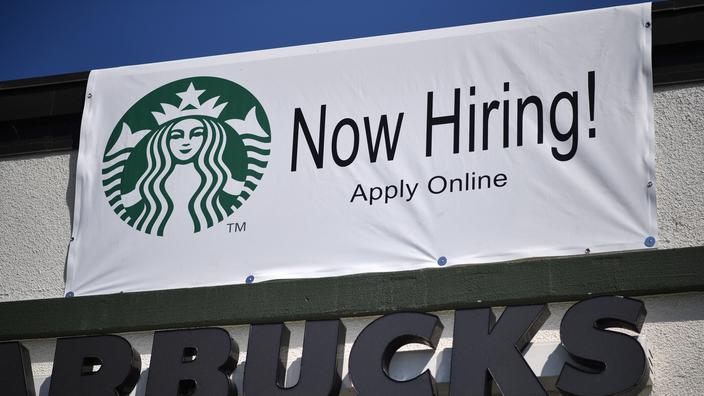The pandemic and the labor shortage are boosting low wages in the United States to the point of generalizing, in large companies, the 15 dollars an hour, a minimum wage long advocated by Democrats.
Economists are moderating the risks of fueling inflation for the time being, the July data of which will be released on Wednesday, August 11.
“For the first time since the late 1990s, employees with low wages have a little more influence to demand higher wages
,
”
says David Cooper, economist at the Institute for Economic Policy (EPI) , an American think tank.
Read also: The pandemic and the delays in vaccination are accentuating the growth gaps in the world
Despite record vacancies, millions of Americans are unemployed.
Many of them no longer want to work for poverty.
Others are forced to refuse jobs for lack of childcare or a suitable profile.
Not without consequences for employers, particularly in the catering sector, who are forced to limit the hours of their establishment despite the mass return of their customers.
To attract candidates, more and more employers are putting their hands in their pockets with not only salary increases but also the granting of bonuses and benefits.
The CVS pharmacies thus joined last week the cohort of large companies - Amazon, Target, Chipotle, etc. - having decided to cross the threshold of 15 dollars an hour.
However, its employees will have to wait until July 2022.
Retail giant Walmart announced at the end of July that it would pay the full tuition fees of certain schools for its American workers, the latest effort by the country's largest private employer to attract and retain employees in the face of a competitor, Costco, which pays better.
"No other choice but to pay"
"Companies have no choice at the moment but to pay,
" said Rubeela Farooqi, chief economist at High Frequency Economics.
"What the Democrats have not been able to accomplish (enact a minimum wage of $ 15), companies are achieving because of the effects of the pandemic,"
she said.
In the United States, the federal minimum wage is $ 7.25, a level unchanged for 12 years even though several states impose a higher wage.
Upon his arrival, President Joe Biden tried to legislate $ 15 an hour but fierce opposition in the Senate had forced him to abandon his campaign plan.
For lack of anything better, in April he signed a decree raising the minimum wage for federal contract workers to $ 15 in early 2022 from $ 10.95 currently.
Competition between companies means that for the first time, the average salary of supermarket and restaurant workers exceeds $ 15 an hour, according to the Washington Post.
This is certainly an average, with a myriad of employees whose pay remains much lower.
But
"nearly 80% of American workers now earn at least $ 15 an hour, against 60% in 2014,"
continues the daily.
And, wage increases are expected to continue next year.
Employers are forecasting average increases of 3% in 2022, according to a survey by consulting firm Willis Towers Watson, carried out between April and June.
This is more than the + 2.7% forecast this year, according to the same source.
"One-off readjustment"
"Let's not conclude that this is a permanent long-term change,"
tempers David Cooper of the Institute for Economic Policy.
"The structures of the US economy, which have held back wage growth in much of the US economy for decades, have not changed," he
notes.
"It is a one-off readjustment of the lowest wages that will lead to an increase in consumption"
, agrees Gregory Daco, chief economist at Oxford Economics, stressing that "it is not excessively restrictive for companies which can postpone the increases on the consumer ”.
Read also: Europe's proposals to improve low wages
However, he does not see an inflationary spiral in wages.
Rubeela Farooqi either because
"the workforce remains several million below the level before the pandemic".
For July, economists project an increase in inflation, measured by the CPI index, of 0.5% after + 0.9% in June.
Average hourly wages increased 0.4% in July compared to June and 4.7% year on year.

